Many drivers and transportation businesses face difficulties, even fines, due to a lack of understanding regarding truck logo regulations. This article from Xe Tải Mỹ Đình provides detailed and updated information on truck logo design, helping you not only comply with the law but also optimize brand recognition.
I. Essential Aspects of Truck Logos
1. What is a Truck Logo? Why is Compliant Design Necessary?
A truck logo, also known as business information on the vehicle door, is more than just an identification mark. It is a set of mandatory information required by law to be displayed on every truck participating in traffic.
Properly designed truck logos help authorities and road users easily grasp important vehicle information, such as:
- Transportation Unit Name: Identifies the owner and managing unit of the vehicle.
- Contact Phone Number: Facilitates contact when necessary.
- Permissible Cargo Weight: Ensures the vehicle is not overloaded, violating traffic laws and causing safety hazards.
- Vehicle Tare Weight: Information about the vehicle’s weight when empty.
- Permissible Total Weight for Traffic Participation: The maximum total weight the vehicle is allowed to carry (including both vehicle and cargo).
Designing and displaying truck logos is not only a legal obligation but also demonstrates the professionalism and law-abiding nature of a transportation business. Simultaneously, truck logos contribute to traffic safety, preventing unfortunate incidents caused by overloading or unclear information.
Truck logos are typically rectangular, circular, or semi-circular, depending on the design and regulations of each transportation unit, but must comply with legal requirements regarding content and dimensions.
 Truck logos are mandatory information on every truck
Truck logos are mandatory information on every truck
Truck logos are not just identification marks but also mandatory legal information, aiding in weight management and ensuring traffic safety.
2. Mandatory Information in Truck Logo Design
According to Appendix 14 of Circular 12/2020/TT-BGTVT, when designing a truck logo, you must ensure the following information is included:
- Transportation Unit Name: Could be the company name, cooperative name, or brand logo.
- Contact Phone Number: The transaction phone number of the transportation unit.
- Permissible Cargo Weight (tons): This information indicates the maximum cargo weight the vehicle is allowed to carry when participating in traffic.
- Tare Weight (tons): The weight of the vehicle when it is not carrying cargo.
- Permissible Total Weight for Traffic Participation (tons): The maximum total weight of the vehicle and cargo allowed when in traffic.
These weight parameters are clearly stated in the Certificate of Technical Safety and Environmental Protection for Motor Vehicles. Truck logo design must ensure this information is displayed accurately and legibly.
With the information clearly displayed on the logo, authorities and the public can easily check and monitor vehicle weight and basic information, contributing to the management of transportation activities and ensuring traffic order and safety.
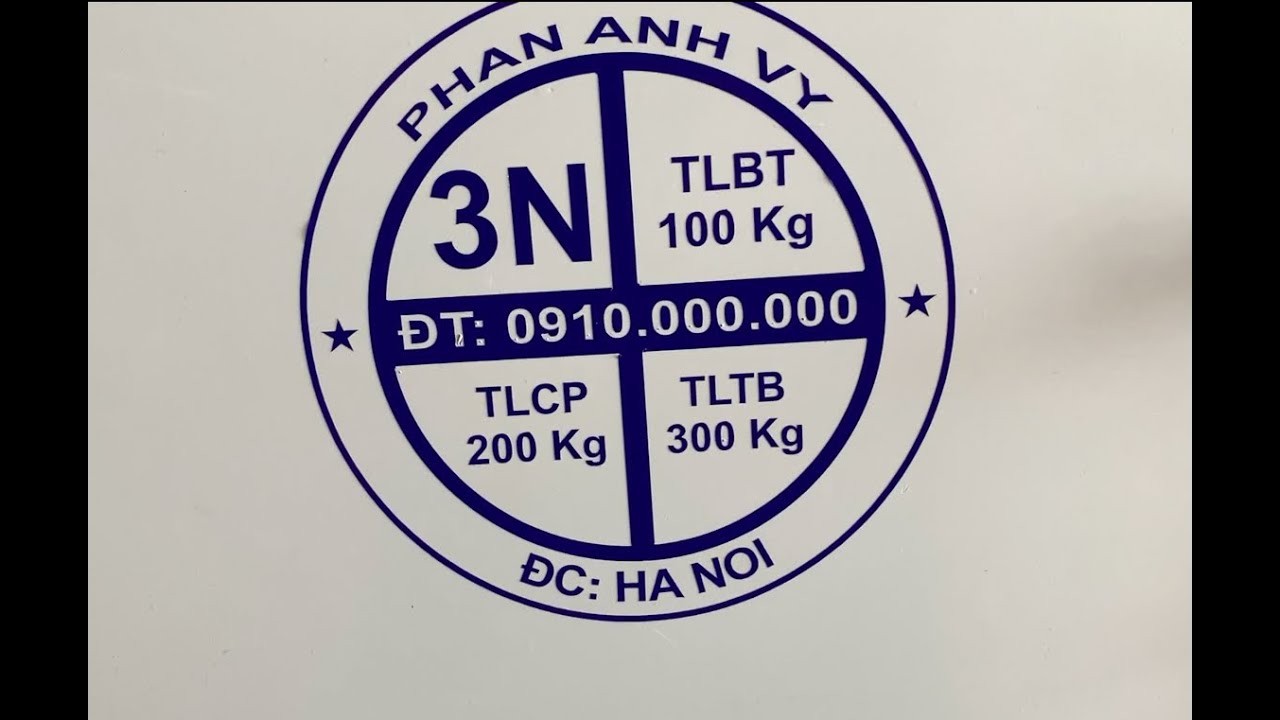 Parameters on truck logos are specified in the Vehicle Inspection Certificate
Parameters on truck logos are specified in the Vehicle Inspection Certificate
Weight information on truck logos helps drivers and authorities control cargo loading, preventing overloading violations.
3. Prescribed Location for Truck Logo Display
The location for displaying truck logos is clearly regulated by law to ensure recognizability and uniform compliance. Specifically:
- For trucks and tractor trucks: Logos must be displayed on the exterior of both driver’s cabin doors. This is an easily observable position, not obscured by other vehicle parts.
- For trailers and semi-trailers with cargo bodies: Logos are displayed on the exterior of both sides of the cargo body.
- For trailers and semi-trailers without cargo bodies: Logo information must be displayed on a metal plate attached to the vehicle frame, in an easily observable position on the side or rear.
Complying with the correct truck logo display location is an important part of adhering to road transport regulations. This helps authorities easily inspect, monitor, and ensure traffic order and safety.
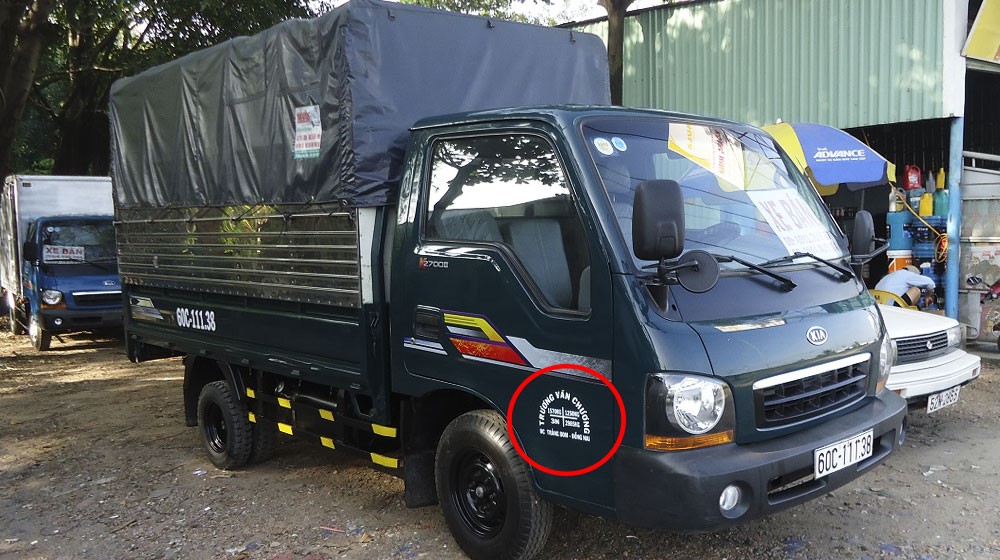 Truck logos are affixed to the exterior of the driver's cabin door
Truck logos are affixed to the exterior of the driver's cabin door
The location for truck logo placement is specifically regulated by law, ensuring recognizability and uniform compliance.
II. Guide to Reading Parameters on Truck Logos
To understand the meaning of numbers and symbols on truck logos, you need to grasp how to read and interpret each piece of information. Here is a detailed guide:
- Number of passengers allowed (e.g., 2N): The letter “N” stands for “Người” (Person), and the number preceding “N” indicates the maximum number of people allowed, including the driver and co-driver. For example, “2N” means the vehicle is allowed to carry a maximum of 2 people.
- Contact Phone Number: The phone number of the transportation unit, used for contact when needed.
- Vehicle Weight (tons): Weight parameters are usually arranged in order from top to bottom:
- Permissible Cargo Weight: The maximum cargo weight the vehicle is allowed to carry.
- Tare Weight: The weight of the vehicle when empty.
- Permissible Total Weight for Traffic Participation: The maximum total weight of the vehicle and cargo.
- Transportation Unit Name: The full or abbreviated name of the transportation company or cooperative, along with a logo (if any).
Understanding how to read the parameters on truck logos helps drivers and transportation managers control weight, comply with regulations, and ensure safety during cargo transportation.
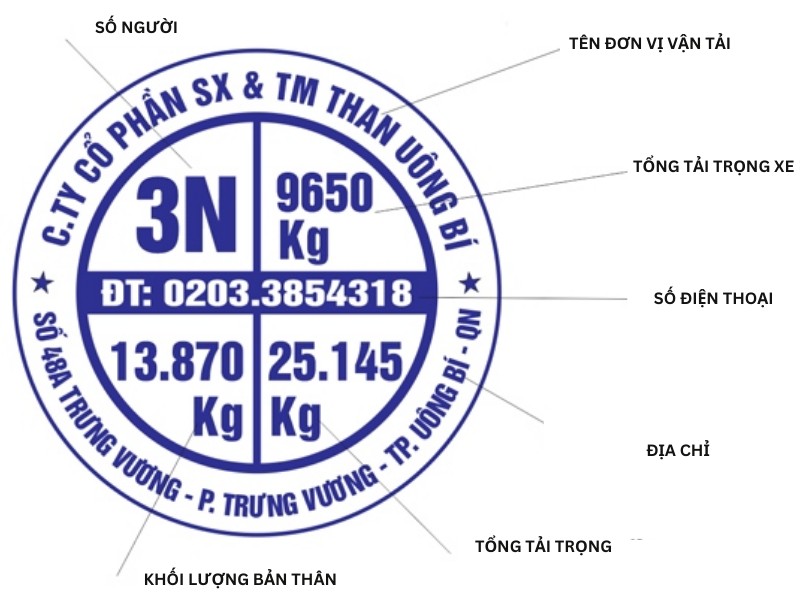 Meaning of each parameter on a truck logo
Meaning of each parameter on a truck logo
Understanding how to read truck logo parameters helps drivers and transport businesses comply with weight and safety regulations.
III. Legal Regulations on Truck Logo Design and Placement
1. Truck Logo Placement – Mandatory Regulation
According to regulations of the Ministry of Transport, truck logo placement is mandatory for all types of trucks involved in goods transportation activities. This is one of the important legal requirements that businesses and individuals owning trucks must comply with.
Trucks without logos or displaying inaccurate information will be considered violations and penalized according to the law. Compliance with truck logo regulations demonstrates law-abiding awareness and the responsibility of transportation businesses towards traffic safety.
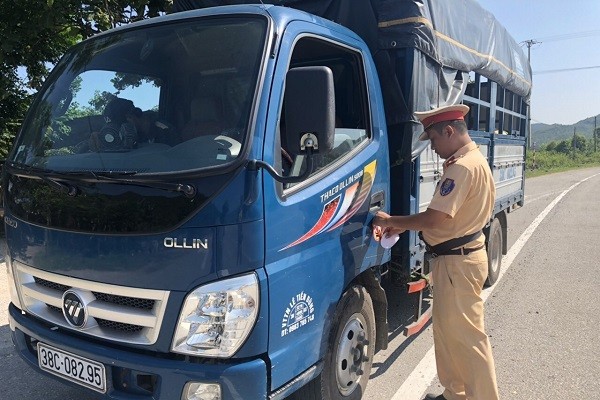 Failure to display a logo or displaying inaccurate information on the logo will result in fines
Failure to display a logo or displaying inaccurate information on the logo will result in fines
Truck logo placement is a mandatory legal requirement, aiding authorities in managing and easily penalizing violations.
2. Procedures for Requesting Permission to Place Truck Logos
Currently, the law does not require businesses to apply for permits to place truck logos. Businesses can design and place logos themselves or hire professional services. However, the design and placement process must comply with regulations regarding content, dimensions, location, and materials to ensure legality and effective recognition.
Autonomy in logo design and placement helps businesses save time and costs, while also proactively showcasing their brand and necessary information on their trucks.
3. Specific Regulations When Designing Truck Logos
Based on Appendix 26 of Circular No. 63/2014/TT-BGTVT, when designing truck logos, the following factors should be noted:
- Complete and Accurate Logo Content: The logo must include all mandatory information as regulated (unit name, phone number, weight parameters). This information must be absolutely accurate compared to vehicle documents and technical specifications.
- Correct Logo Placement Location: Logos must be placed in the prescribed locations (driver’s cabin doors, cargo body, or metal plate for trucks without bodies).
- Minimum Logo Size: The minimum logo size is 20x30cm, ensuring easy reading and recognition from a distance.
- Durable Logo Material and Adhesion: Logo material must withstand weather and environmental impacts and ensure firm adhesion to the vehicle surface. Specialized adhesives should be used, and the vehicle surface should be cleaned before application.
- Simple, Easily Recognizable Logo Design: Prioritize simple, clear, and easy-to-read truck logo designs, helping drivers and traffic officers easily recognize information.
- Clear Distinction Between Logo Content and Advertising: If businesses want to advertise on trucks, they must comply with separate advertising regulations and obtain permission from the local Department of Culture and Sports. Advertising content must not be confused with truck logos and mandatory legal information.
 Information on the logo must be complete and accurate according to regulations
Information on the logo must be complete and accurate according to regulations
Truck logo design must ensure legality, durability, and brand recognition, while complying with regulations on size, location, and content.
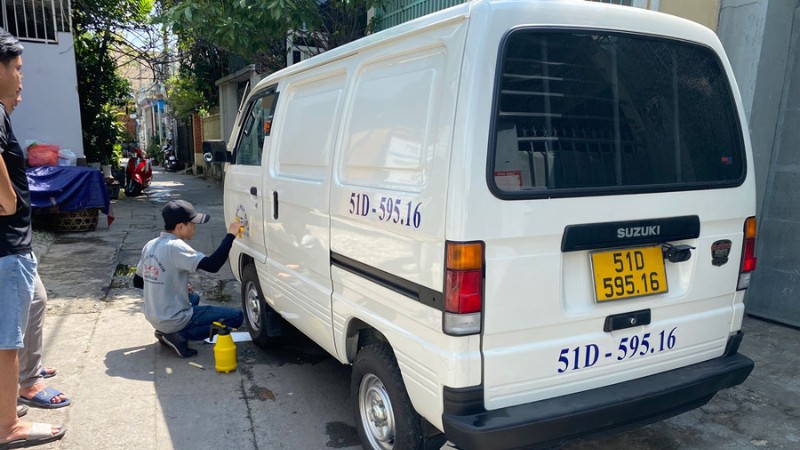 Truck logos must be placed in the correct location, using weather-resistant materials
Truck logos must be placed in the correct location, using weather-resistant materials
The material and application of truck logos must ensure durability, withstanding harsh weather conditions and the transport environment.
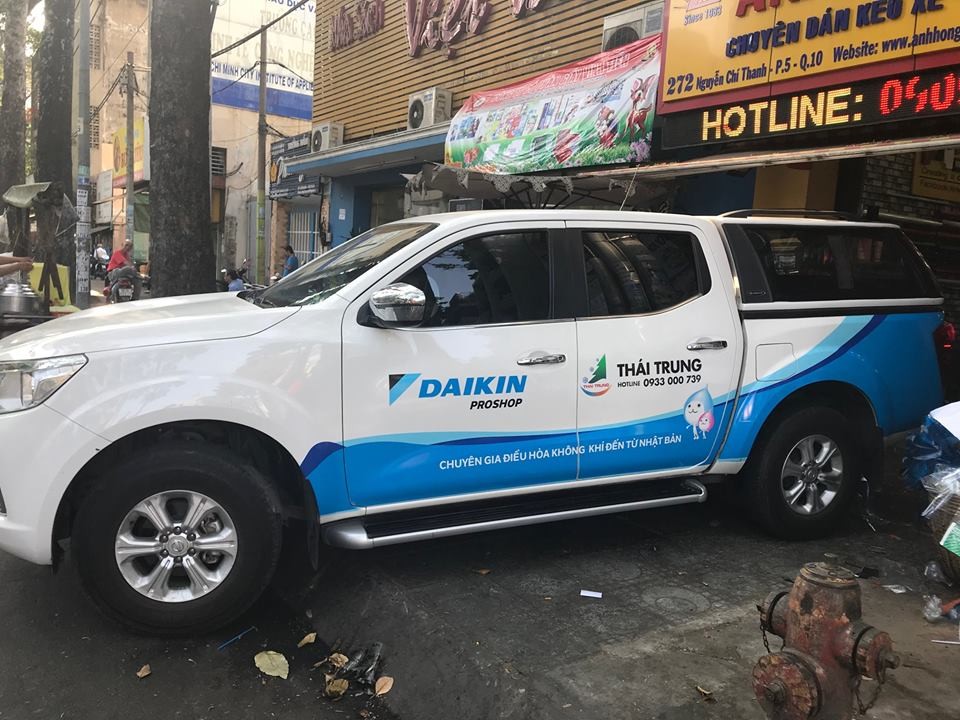 Clearly distinguish between truck logo content and advertising content
Clearly distinguish between truck logo content and advertising content
Businesses need to clearly differentiate between truck logos (legal information) and advertising content to comply with legal regulations.
IV. Penalties for Violating Truck Logo Regulations
According to point b, clause 2, Article 28 of Decree 100/2019/ND-CP, the act of not displaying or displaying inaccurate or incomplete names, phone numbers of transportation business units, vehicle tare weight, permissible cargo weight, permissible total weight for traffic participation on truck doors will be penalized:
- For individuals: From VND 1,000,000 to VND 2,000,000.
- For organizations: From VND 2,000,000 to VND 4,000,000.
In addition to fines, violating individuals and organizations are also required to remedy the consequences, i.e., to fully and accurately display the information as required. This penalty level demonstrates the strictness of the law regarding violations of truck logo regulations, aiming to ensure order and safety in transportation activities.
 Violations of truck logo placement regulations are fined from 1 to 2 million VND for individuals
Violations of truck logo placement regulations are fined from 1 to 2 million VND for individuals
Penalties for truck logo violations are not insignificant, so businesses and drivers should pay special attention to compliance.
V. Other Important Documents Drivers Need to Carry
In addition to complying with truck logo regulations, drivers must always carry the following documents to avoid fines when participating in traffic:
- Vehicle Registration Certificate: Proves vehicle ownership.
- Driver’s License: Ensures the driver is qualified to drive a truck.
- Certificate of Civil Liability Insurance of the Vehicle Owner: Mandatory insurance as regulated.
- Certificate of Transport Business Registration (if applicable): For businesses engaged in transportation.
- Trip Logbook: Records journey and transportation information.
- Truck Badge (if applicable): For contract or fixed-route transportation businesses.
- Permit for Oversized/Overweight Vehicles (if applicable): For vehicles carrying oversized/overweight cargo.
- Certificate of Technical Safety and Environmental Protection Inspection: Certifies that the vehicle meets safety and environmental standards.
Preparing all necessary documents and complying with truck logo regulations is the responsibility of every driver and transportation business. This not only helps avoid fines but also contributes to building a civilized, safe, and efficient traffic environment.
 Mandatory to carry vehicle registration certificate when in traffic
Mandatory to carry vehicle registration certificate when in traffic
Vehicle registration certificate is an important legal document, proving ownership and legality of the vehicle.
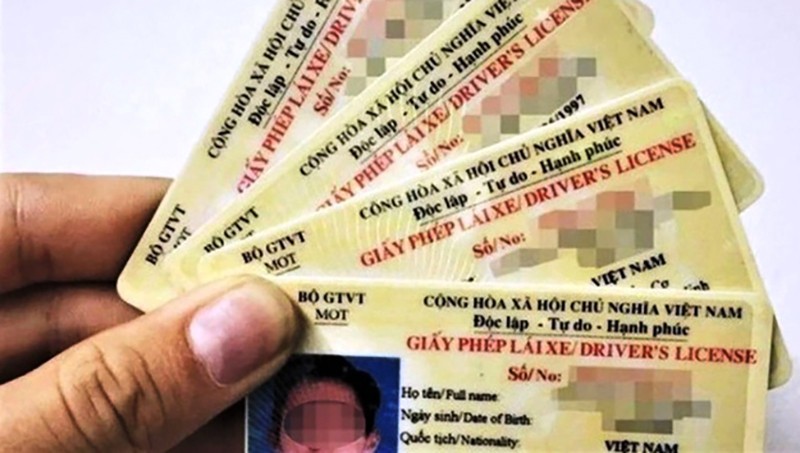 Failure to carry a driver's license can result in fines from 200,000 to 3,000,000 VND
Failure to carry a driver's license can result in fines from 200,000 to 3,000,000 VND
Driver’s license proves that the vehicle operator is qualified and authorized to drive according to regulations.
 Mandatory to purchase civil liability insurance and carry it when in traffic
Mandatory to purchase civil liability insurance and carry it when in traffic
Civil liability insurance is mandatory insurance, ensuring benefits for both the vehicle owner and third parties in case of incidents.
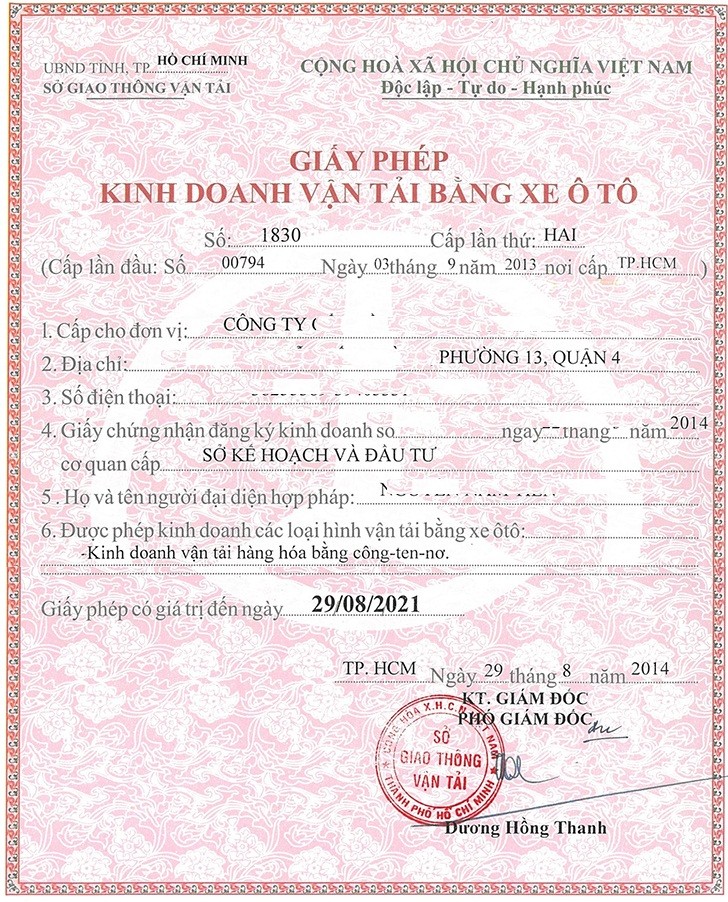 Need to carry a certificate of transport business registration to avoid fines
Need to carry a certificate of transport business registration to avoid fines
Certificate of transport business registration is a necessary document for businesses operating in the goods transportation sector.
 Trip logbook is mandatory when driving a cargo truck
Trip logbook is mandatory when driving a cargo truck
Trip logbook helps record information about the journey and transported goods, serving management and control purposes.
 Truck badge must be valid and affixed to the windshield on the driver's right side
Truck badge must be valid and affixed to the windshield on the driver's right side
Truck badge is an identification mark for professional transportation business vehicles, needing to be displayed in the correct position and valid.
 Without an oversized/overweight permit, drivers can be fined from 8 to 12 million VND
Without an oversized/overweight permit, drivers can be fined from 8 to 12 million VND
Oversized/overweight vehicle permit is a special document, allowing vehicles with dimensions or weights exceeding regulations to participate in traffic.
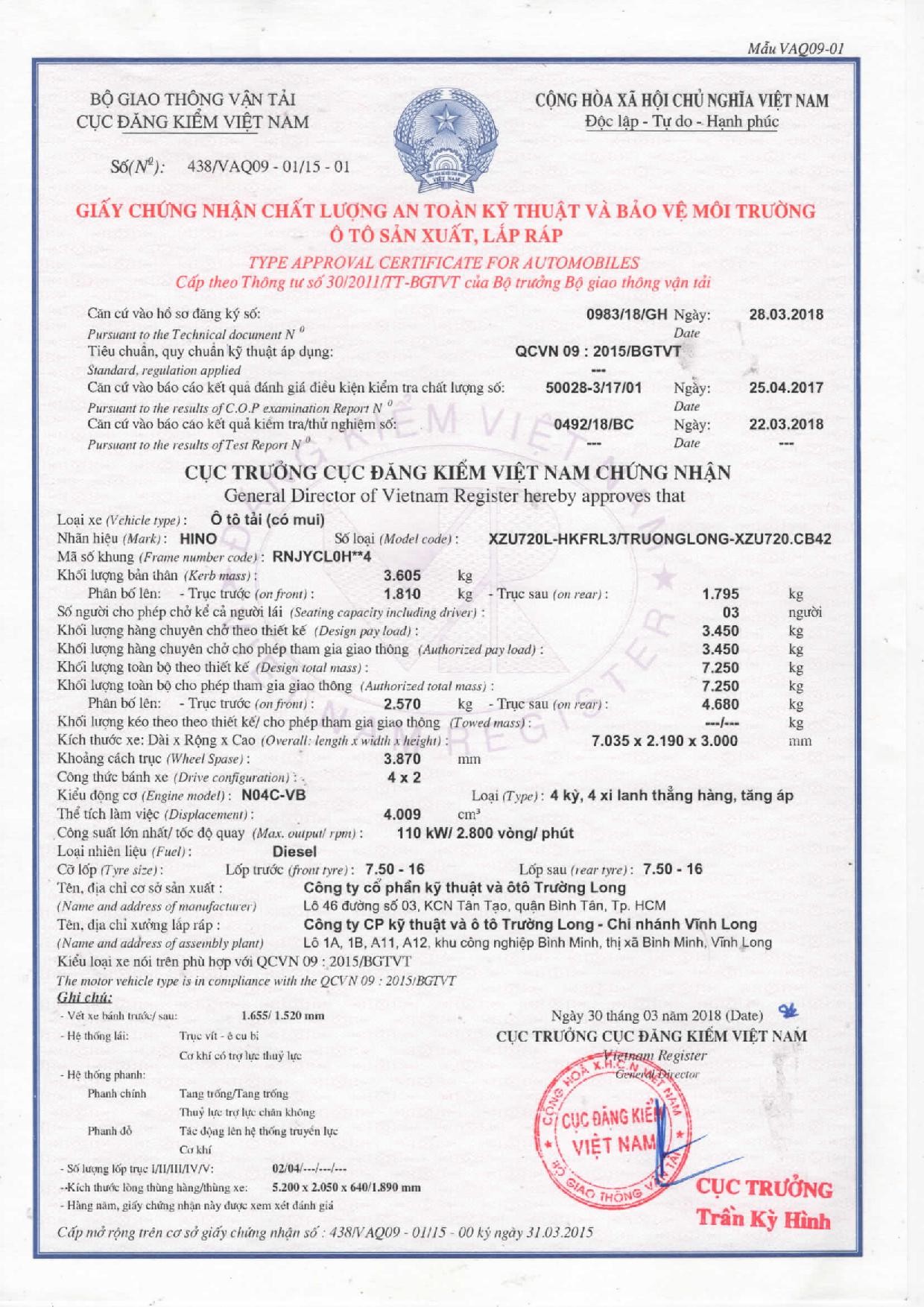 Drivers need to carry a certificate of quality inspection every time they are in traffic
Drivers need to carry a certificate of quality inspection every time they are in traffic
Certificate of technical safety and environmental protection inspection ensures the vehicle is always in good operating condition and environmentally friendly.
Conclusion:
The above article from Xe Tải Mỹ Đình has provided comprehensive information about truck logo design, related legal regulations, and necessary documents for truck drivers. Hopefully, this information will help drivers and transportation businesses better understand the importance of regulatory compliance, thereby operating more efficiently and safely.
If you are interested in purchasing high-quality trucks at good prices, please contact Xe Tải Mỹ Đình immediately for advice and the most attractive offers!
 Buy trucks at Ô Tô Phú Cường to receive great deals and the best market prices
Buy trucks at Ô Tô Phú Cường to receive great deals and the best market prices
Xe Tải Mỹ Đình – A trusted address providing quality trucks and leading transportation support services.
—
Otophucuong.vn
(Updated: February 08, 2025)

